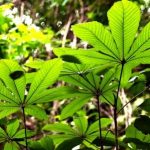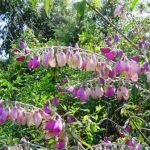TREE LIFE
November 2003
WHILE THE CURRENT FUEL CRISIS PERSISTS IT IS IMPORTANT TO CONFIRM WITH ANY OF THE COMMITTEE MEMBERS THAT THE SCHEDULED OUTINGS AND WALKS CAN ACTUALLY TAKE PLACE. SEE THE BACK PAGE FOR PHONE NUMBERS.
MASHONALAND CALENDAR
Tuesday 4th November. Botanic Garden Walk. Meet in the car park at 4.45 for 5 p.m. Tom will continue with Albizias, – this fascinating topic was started in October. See Mark’s account of that walk in this Tree Life.
Sunday 16th November. Meg Coates Palgrave will lead this month’s outing when we visit Kevin Fallon’s farm near Arcturas.
Bring your lunch, a chair and we will meet at the farmhouse at 9.30 am.
Saturday 22nd November. Mark’s Walk is to Greystone Park Nature Reserve. It is some time since we last walked here so it will be interesting to see how it has developed.
Tuesday 2nd December. Botanic Garden Walk.
Sunday 7th December. Christmas Social.
As Mark will be away there will not be a walk on the fourth Saturday of December.
MATABELELAND CALENDAR
Nothing has been arranged for November.
VISIT TO MITCHELL AND MITCHELL, MARONDERA: 21 SEPTEMBER 2003
Once again, our outing was to the Marondera area; this time to Mitchell & Mitchell, one of the country’s largest exporters of agricultural produce, which surprisingly in today’s circumstances, is still functioning. We assembled at Jenny Mitchell’s lovely house and from there we were led in a small convoy of cars to a dam. The drive took us along a shallow valley filled with cultivation, some in the open, other areas under large areas of plastic sheeting. Irrigation was everywhere and the whole area was obviously indicative of intensive farming practices.
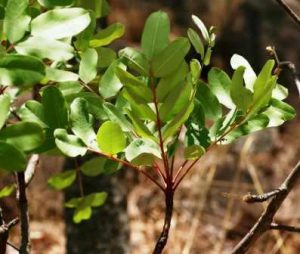
Ekebergia benguelensis. Photo: Bart Wursten. Source: Flora of Zimbabwe
Near the dam we had a short walk along a fringe of trees. Although it did not look a very promising area there were trees of interest. Ekebergia benguelensis, the woodland dogplum, was showing its new leaves and also its inflorescences of small white flowers.
On round to a large anthill; here were a few plants of Vernonia myriantha, the so-called poison-tree vernonia. Vernonia is a large genus from the family Asteraceae. It is in fact one of the large genera of plants in Zimbabwe. Although most are herbaceous or sub-woody, some are shrubs and a few may become small trees, an unusual feature in this family.
Vernonia myriantha in particular is a most interesting species. It has large flattish heads containing numerous small “flower heads”, each one of these a cluster of the true florets. The flower colour is variable from lilac or even darker shades of purple to very pale or almost white. It flowers very early in the year, often in winter. An earlier name for this is Vernonia stipulacea and this is a better name really in that this species has prominent false stipules at the base of the leaf stalks. These are exceedingly noticeable at some seasons but by the time the plant has finished flowering, they have usually dropped off. On this occasion, the plant was in fruit and most of the stipules had gone.
The look of the plant is similar to Solanum mauritianum (the bug tree) which is an exotic species. It has similar broad leaves and prominent stipules but the bug tree has completely different flowers (large individual purple flowers) and fruit (spherical capsule). An easy test if flowers and fruit are not present is that the Solanum is densely stellate-hairy whereas the Vernonia’s hairs are simple.
The anthill also had Cussonia natalensis (the simple-leaved cabbage tree). This differs from the more common C. arborea in having approximately star-shaped leaves with c.5 lobes.
Throughout the day we saw a great deal of Ageratina adenophora. This is a white-flowered composite with smallish capitula in flattish-topped inflorescences, a bit like an Ageratum. Again, it flowers in late winter or early Spring and it was certainly flowering in abundance on this occasion. It is a very successful and rapidly spreading weed, which likes disturbed ground and wet areas like vleis and stream sides.
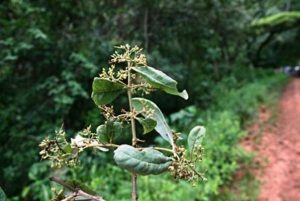
Olinia vanguerioides. Photo: Mark Hyde. Source: Flora of Zimbabwe
Perhaps the most interesting species seen was Olinia vanguerioides, which was spotted by Maureen. This belongs to the family Oliniaceae, a small and not well-known family with us. Superficially it looks a bit like a Rubiaceae, as the specific name suggests, with its broad opposite leaves and woody form, but it lacks the interpetiolar stipules typical of most woody Rubiaceae. Often the petiole and main vein of the leaf are reddish, as was the case here.
From this site we then drove back along the way we came, stopping for lunch near to some evergreen trees we had seen further up a hill. We hoped that where there were evergreen trees there might be a water course and hence some different species. And so it turned out.
After lunch in some dry hot woodland we climbed a short way up a dry rocky hillside; here were all three common brachystegias, namely glaucescens, boehmii and spiciformis. Some low shrubs with dark leaves were Diospyros whyteana, a higher rainfall species with bladdery fruits. Also present was Pleurostylia africana, Euclea crispa and Maytenus undata.
Up the hill we came across what appeared to be a disturbed vlei – absolutely full of the Ageratina again. But next to it was an absolute gem – a flowing stream with water running over the rocks. Along the stream were the large evergreen trees, primarily Syzygium cordatum (the waterberry).
In the shade of one of these trees was a little pond surrounded by dense masses of ferns: an Adiantum species and one other. The contrast with the dry leafless woodland all around it was magical.
We then walked slowly down and alongside the rocky stream bed, climbing over large boulders and jumping the little stream. Riverine shrubs such as Rhamnus prinoides and Catha edulis were seen, all in green leaf while close by was the dry bush waiting for the first rains. It was a splendid end to the day.
Our thanks go to Jenny Mitchell for allowing us to visit and for her assistance. We hope one day to return.
-Mark Hyde
BOTANIC GARDEN WALK: 7 OCTOBER 2003
Tom’s subject was the genus Albizia, a widespread and common genus in Zimbabwe.
Excluding two exotic species and the puzzling plant at Headlands [see note 1 below], there are 14 native species of Albizia in Zimbabwe.
What are their features?
- they are legumes and belong to the subfamily Mimosoideae, to which the acacias also belong;
- they are woody plants – in fact all our species are trees;
- they have 2-pinnate leaves (like acacias);
- the leaves have a prominent gland on the petiole;
- they have no thorns or prickles (unlike acacias; this is probably the best way of separating the two genera) [see also note 2 below];
- the inflorescence consists of numerous small flowers arranged in powder-puff-like heads;
- the stamens are numerous and are sometimes long-exserted from the corolla;
- the heads may have 1-2 central flowers which are different in size and shape to the rest;
- the pods are usually oblong and flat and may be dehiscent or not.
One other technical taxonomic feature is whether the stamens are united below into a tube (known, not surprisingly, as a staminal tube).
Using this character, the 14 species can be broken down into 3 groups:
Group A: Pods dehiscent; stamen filaments long (1.5-5 cm); staminal tube enclosed within the corolla.
5 species: anthelmintica, antunesiana, harveyi, tanganyicensis, versicolor
Group B: Pods indehiscent; stamen filaments short (0.5-1.5 cm); staminal tube enclosed within the corolla.
6 species: amara, brevifolia, forbesii, glaberrima, schimperiana, zimmermannii.
Group C: Pods dehiscent; stamen filaments (character not clear); staminal tube long-exserted from the corolla.
3 species: adianthifolia, gummifera, petersiana
After all this theory, how in practice do you tell albizias apart? Fortunately, apart from difficulties in the adianthifolia/ gummifera couple of species (possibly also schimperiana), the problems of which may be due to our ignorance rather than any real problem, albizias pose few taxonomic difficulties.
Leaflet size varies considerably from species to species and hence is very useful as a separation character. Tom also remarked on the position of the large gland on the petiole which is constant between each species.
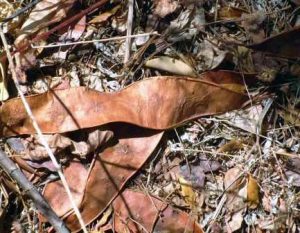
Albizia zimmermannii. Photo: Rob Burrett. Source: Flora of Zimbabwe
The first tree we looked at was Albizia zimmermannii (woodland long-podded albizia). This is a large tree with medium-sized leaflets, which could be confused with schimperiana. Tom mentioned its strange ecology; it occurs on limestone (the Lomagundi limestones) north of Banket and specifically at the Dichwe forest. Apart from there it is also frequent in the lower altitudes of the Mudzi area and the lower Mazowe river, where it sometimes covers the hills.
As the classification above tells us, its pods are indehiscent and the stamen filaments are short.
On next to Albizia tanganyicensis (the paperbark albizia). This is a very distinctive species because of its striking pale and papery bark. It grows on rocky places, mostly on granite and is usually a lowveld species but it does come up as high as Christon Bank.
This one was in flower and we could actually see the powder-puff flowers and the very long stamens, typical of a Group A species.
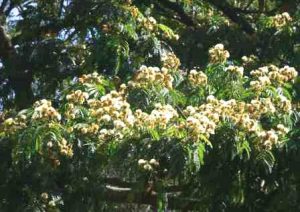
Albizia schimperiana. Photo: Bart Wursten. Source: Flora of Zimbabwe
On next to Albizia schimperiana growing near to the herbarium building. This is a rain forest tree, the driest type of pioneer species. As a Group B species, its pods are indehiscent and also large and papery; the gland is 1/3 to of the way up the petiole and the leaflets have an almost symmetrical base. The bark is smooth, like gummifera.
Albizia antunesiana (purple-leaved albizia) is common around Harare and is one we know very well. It has a big shaving-brush inflorescence and long stamens. This is a true savannah tree and has large leaflets and relatively few pinnae (1-2 pairs). It is a Group A species with dehiscent pods.
Albizia versicolor (the poison-pod albizia) has beautifully soft, furry leaves. The common name is because the immature, green pods are poisonous to cattle, should they fall early for some reason – e.g. in an early storm.
Albizia petersiana subsp. evansii is one I’ve never seen in the wild. It has small leaves and belongs to the same group as gummifera. Tom explained that it has few pinnae and therefore short leaves; it grows on the Stromberg series of the karoo system, for example on Malilangwe. At Sentinel Ranch, Tom has seen a jesse of this species mixed with the tambootie tree.
Albizia forbesii has tiny leaves and occurs only in the SE lowveld on Triassic sand. Flowers are very small and the fruit are indehiscent. It is a woodland species.
Next: Albizia anthelmintica. Mainly occurring in the lowveld, this has extremely showy flowers. It grows in the Valley on old alluvial fans which don’t reach the river. This has a very rough bark. It is a bit like A. amara but the leaflets are highly asymmetrical. Tom mentioned that you only find it on basalt-derived soils e.g. as a shrub on heavy clays.
At this stage, with darkness closing in, it was agreed that we would finish these off next week.
Once again, thanks to Tom for his expertise which was stimulating as usual.
Note 1: in addition to the native species, 3 exotics have been recorded, namely: Albizia chinensis (said to be naturalised but is it?); Albizia procera (this is definitely well naturalised in the valley of the Tanganda river near Chipinge) and finally Albizia lebbeck, a planted species, which as far as I know never gets into the wild.
The “puzzling plant at Headlands” remains a bit of a mystery. Currently (last time I looked) filed at the herbarium as a possible hybrid between A. amara and A. antunesiana, it has variously been recorded as A. zimmermannii and A. forbesii.
Note 2: The rule that “acacias are spiny and albizias are not” generally works well, but there are some minor caveats. Firstly, as Flora Zambesiaca obligingly points out A. harveyi may have a small prickle beneath each node and A. anthelmintica may have spiny branchlets.
Secondly, some acacias, particularly large mature trees, can be completely without spines or thorns of any sort, which can be most confusing. Furthermore, it is not only large acacias of which this is true; the first time we saw Acacia chariessa at Ngezi Dam. This was a small shrub and had no thorns at all. Given that, we rejected acacia and spent a lot of fruitless thinking trying to fit it into other genera. Eventually, we came across some more specimens which did have thorns and the mystery was solved.
-Mark Hyde
THE SNOT APPLE AT MUBAYIRA
Newcomers…may be indifferent (or even averse!) to this as a repast, but children who know the tree… are very fond of this fruit.
COATES PALGRAVE (1956) – TREES OF CENTRAL AFRICA
As the people of Zimbabwe become increasingly urbanized so do they lose touch with the country’s indigenous trees, and the edible wild fruits that grow on them? How many of today’s urbanized young people have ever chewed a snot apple? How many know what a snot apple tree looks like? How many realize that its dry, furry, hard-looking fruits are edible – and sweet?
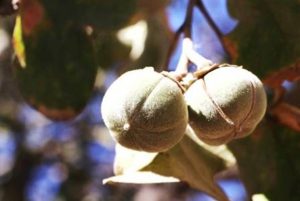
Azanza garckeana. Photo: Mark Hyde. Source: Flora of Zimbabwe
Azanza garckeana (for long known as Thespesia garckeana) gets its not-altogether-“nice” English name from its mucilaginous fruits. The whole fruit is eaten, fur and all; it is chewed like chewing-gum, and a sweet, glutinous slime is produced. The Shona names mutohwe or mutobwe, and the Ndebele name ixaguxagu are onomatopoeic, and convey the rather indelicate sounds made when chewing the fruit.
The snot apple is usually a small tree up to about 7 metres tall – sometimes it is no more than a shrub – but at Mubayira in the Mhondoro Communal Lands there is an exceptionally large specimen at the entrance to the Forestry Commission’s nursery near the show hall. This fine tree was 13 metres tall in September 1988, with a diameter of 68.6 cm measured at 50 cm above the ground to avoid a fork at 1.2 metres. The crown spread was 17 metres. At one time this tree suffered the indignity of being pressed into service as a gate post for the nursery, and a piece of wire could still be seen protruding from the stem a little above ground level.
The snot apple belongs to the botanical family Malvaceae, which includes the common hibiscus and hollyhock – also the cotton plant, and therein lies a problem. The snot apple is one of the hosts of the red-and-black bug, Dysdercus fasciatus, better known as the cotton stainer, and the tree is unwelcome in cotton-growing areas. Despite the botanical affinities, snot apple has a remarkably attractive wood – dark brown, easily worked, fragrant when freshly cut. And there are indications of great durability, too. A log of this species was taken from an archaeological dig at an old fort in the Zimbiti Communal Lands north of Nyanga; it was said to be 225 years old and, although the sapwood had disappeared, the heartwood was still perfectly sound.
The species is widespread in Zimbabwe and the immediately adjoining regions of Mozambique, South Africa, Botswana, and Namibia (Caprivi Strip), and it also occurs at least as far north as Kenya.
-Lyn Mullin
THE WILD EBONY AT DETEEMA
Poems are made by fools like me,
But only God can make a tree.
JOYCE KILMER – TREES
This could have been one of the trees that Joyce Kilmer had in mind, this wild ebony at Deteema, a tree shaped and fashioned by the Master Craftsman himself. It stands just below the picnic enclosure at Deteema in the Hwange National Park, not the biggest specimen of its kind in Zimbabwe – Gonarezhou can probably claim that – but surely one of the most beautiful.
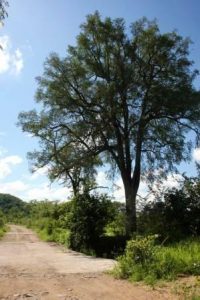
Diospyros mespiliformis. Photo: Bart Wursten. Source: Flora of Zimbabwe
Wild ebony, Diospyros mespiliformis, is widely distributed in Zimbabwe, but it is most common at the medium and lower altitudes where its more-or-less evergreen habit makes it very conspicuous in the dry season. It is commonly up to 15 or 20 metres tall, with a dense, rounded crown, but occasionally it may reach a height of 30 metres. The tree at Deteema was measured in June 1987, when its height was 22.5 metres, its diameter 1.43 metres, and its crown spread 26 metres. The bole was fairly short – only 4.5 metres – but large, shapely limbs, topped by a magnificent crown, made it a strikingly beautiful tree.
The edible fruit of the wild ebony makes the species very important in the economy of the rural areas of Zimbabwe, and it is usually left standing in cultivated lands. Its twigs, leaves, and bark feature in traditional medicine. The Shona call the tree mushenje or mushuma, the Ndebele know it as umdlawuzo, and the Shangaans as toma, but the English names wild ebony or ebony diospyros are not very satisfactory. The wood is brownish, sometimes streaked with black, but the colour is not consistent. It is not as hard or as heavy as true ebony, Diospyros ebenum, but it is fine textured and is useful for a variety of products.
-Lyn Mullin
ROOIBOS TEA – SPALATHUS LINEARIS (Fabaceae)
This plant is a shrub of up to two metres high, with bright green needle-shaped leaves which turn reddish-brown after processing. The small, yellow flowers are produced in early summer, followed by small single-seeded pods.
Rooibos tea is a traditional beverage of the Khoi-descended people of the Cedarberg region in the Cape and is one of only a few indigenous plants that have become an important commercial crop. Production is still centred in its natural distribution area (the districts of Nieuwoudtville, Clanwilliam, Citrusdal and Piquetberg). Seeds have to be treated with sulphuric acid to break the impermeable seed coat and seedlings are transplanted to deep acid sandy soils. The production area has cold wet winters and hot dry summers, with a mere 300 to 350 millimetres of rain per year. Some wild types of rooibos tea are harvested on a small scale, but only one form the so called red type or Rocklands type, is commercially cultivated.
Annual yields vary from about four to nine million kilograms, depending on the rainfall. The plants are mostly harvested with sickles and tied into bundles. They are then chopped into short segments, moistened, bruised and left in heaps to “sweat” or “ferment” for several hours until a sweet smell develops, So-called “fermentation” is actually an oxidation process, during which the phenolic compounds in the plant are enzymatically oxidized. When the tea-maker is satisfied with the colour and aroma, the tea is spread out thinly to sun-dry. Marketing started in 1904, through the efforts of Benjamin Ginsberg, who bought wild tea from local people. During the early 30’s, Dr. P. Le Fras Nortier helped to develop rooibos as a crop plant and Mr. James van Putten played a major role in later years. The Rooibos Tea Control Board was established in 1954 to stabilise producer prices through structured marketing and quality control. This Board was recently turned into a private company. Through imaginative marketing, rooibos tea has become an important commercial product, with retail and export earnings running into many millions of rands per year.
Rooibos is popular as a health beverage, prepared and used in much the same way as black tea. However, it contains no harmful stimulants and is totally devoid of caffeine. It has gained popularity as an excellent iced tea. The health properties are ascribed mainly to the low tannin content, the presence of minerals and the antispasmodic and free-radical capturing properties of several unique flavonoid C-glycosides such as aspalathin and nothofagin. The product is also used as an ingredient in cosmetics, in slimming products, as a flavouring agent in baking, cooking, cocktails and even as a milk substitute for infants who are prone to colic.
From PEOPLE’S PLANTS Ben-Erik van Wyk and Nigel Gericke.
Ann Bianchi is very kindly donating 20 trees to the Tree Society to help raise some much needed cash. If you would like a particular tree let any of the Committee members know and we will try to arrange it for you.
Thank You Ann.
ROOTNOTE : Read any good beeches lately?
The English words book and beech come from the same root because ancient Saxons and Germans wrote on the smooth grey bark of beech trees (Fagus sylvatica). According to my Collins English Dictionary the word beech is derived from the Old English bece; related to Old Norse bók, Old High German bouohha, Middle Dutch boeke. And the word book is derived from Old English boc; related to Old Norse bók, Old High German buoh, Gothic boka (letter).
The practice of writing on beech bark is still alive and well in Bulgaria, according to an article by Peter Davenport in a recent column in The Advocate, a daily newspaper serving southwest Connecticut, USA. This particular column made honourable mention of the Tree Society of Zimbabwe following the provision of material on inscriptions on trees in our part of the world.
So, have you read any good beeches lately?
-Lyn Mullin
MARK HYDE CHAIRMAN


